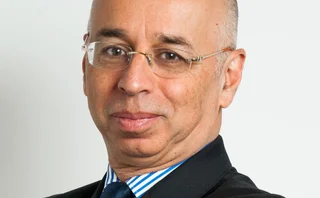
Hiring on the Street
Expectations that fixed-income revenues would drop off in the first quarter have been confounded, with results from the leading banks surprisingly strong. This has led to a surge in hires, particularly among European banks, reports Saskia Scholtes

As the investment banks’ fixed-income desks drafted their forecasts and earnings projections for 2004, the broad consensus seemed to be that this year would see a marked deterioration in the tremendous returns experienced by the sector in 2003. Working on the assumption that the Federal Reserve would soon reverse its accommodative interest rate policy in response to a strengthening economy, corporate debt issuers prepared by pre-funding their financing needs and origination desks readied themselves to pare down staff numbers. In the secondary trading arena, as the US corporate bond market celebrated total returns of 527 basis points over Treasuries for 2003, fixed-income trading desks wondered how they could continue to deliver such stellar performances in an increasingly tight spread environment.
However, as the corporate bond market embarks upon the second quarter of 2004, it seems that the positive environment for fixed income has once again baffled forecasters. For one, interest rates have stayed low and the first few months of the year have shown that since the anticipated economic recovery has been slow to emerge, the likelihood is that rates will remain low for the rest of the year. At the same time, credit spreads have continued to tighten and the yield curve has remained steep.
A good result
First-quarter results for some of the major US banks—Morgan Stanley, Bear Stearns, Lehman Brothers and Goldman Sachs—show that the broker-dealers have made the most of the situation. Despite the anticipated drop in fixed-income issuance, which was down 12% in the first quarter, the fixed-income party is still rolling.
While revenues from debt underwriting at Lehman Brothers declined 21% in the last quarter, Ryan O’Connell, financials analyst at ABN Amro in New York points out, “The falloff in debt issuance did not crimp secondary trading, where Lehman has a strong customer-oriented franchise. This is important, because Lehman expects overall debt issuance to decline 10–15% year-on-year.” Importantly, Lehman has stressed that strong results from fixed-income trading did not reflect an increase in risk appetite or proprietary trading.
At the same time, Lehman’s fixed-income results held up well because of the bank’s strength in the mortgage and securitization sectors. In a conference call with credit analysts, Lehman’s CFO David Goldfarb pointed out that mortgages are the largest asset class in the Lehman index and that the firm increased its share in mortgage securitizations during the quarter. Lehman also reported strong demand for high-yield securities and fixed-income derivatives, as well as growth in European and Asian fixed income.
At Bear Stearns, growth was less robust, but fixed-income capital markets nevertheless rose 4% year-on-year. Again, among the strongest performers was the mortgage sector. While plain vanilla mortgage originations declined, Bear enjoyed good levels of activity in other mortgage products such as adjustable rate mortgages and distressed mortgages. High-yield securities and fixed-income derivatives also performed well.
Even though fixed-income growth at Morgan Stanley was comparatively sluggish, O’Connell at ABN points out, “We should keep these percentage changes in perspective and remember that Morgan Stanley has a large fixed-income business. And on a sequential basis, the fixed-income business performed well, with sales and trading revenues rising 69%.” Morgan Stanley says that credit products benefited from increased securitization flows in commercial and residential whole loans, strong customer volumes and tightening credit spreads.
So good news for all concerned. What’s more, the banks expect further successes in fixed income for the remainder of the year. Goldman Sachs’s chief financial officer David Viniar has told credit analysts that while trading revenue is naturally subject to quarterly swings, the bank expects the fixed-income business to remain strong. And Goldfarb at Lehman Brothers announced in a conference call that Lehman does not expect an interest rate hike in 2004, and believes that the European Central Bank may even cut interest rates one more time. According to commentary from research provider CreditSights, Lehman Brothers also “rejects the notion of an impending secular shift away from fixed-income securities and believes that fixed income will remain healthy in 2004, although below 2003’s blockbuster results”.
Jobs aplenty
This bullish attitude has contributed to a healthy job market in the sector. Richard Stein, senior client partner for North American fixed income and derivatives at executive recruitment firm Korn Ferry, says, “The market is still very optimistic about fixed income and the banks are hiring globally in New York, London and Tokyo to reflect that. While there has been a good degree of movement within the banks as they try to leverage their internal strengths, new hires are also being made in very specialized areas such as collateralized debt obligations, credit derivatives trading, synthetic CDO trading and high-yield credit. There has also been some added focus in mortgage-backed securities.”
Stein also points out that the buy side is still hiring. Indeed, increasing numbers of sell-side professionals are being poached by the fund management sector, and hedge funds in particular. “Credit hedge funds have been big buyers of credit derivative products and collateralized debt obligations, so there has also been a shift in this kind of talent from the banks to the hedge funds. The problem for some banks is that they can’t win their staff back with a few extra dollars, because the move is more a lifestyle and opportunity change.” One example is Anand Parekh’s move from Deutsche Bank in New York, where he was head of North American structuring, to Chicago-based hedge fund Citadel.
This buoyancy in the hedge fund sector is borne out by the appearance of new hedge funds month after month. In February, for example, Longship Capital Management launched a fund of fixed-income hedge funds managed by a team drawn from Lehman Brothers and Columbia Asset Management. Longship’s chief investment officer, William Wadden, is a 20-year veteran fixed-income portfolio manager who was previously responsible for $4 billion of CDOs issued by Columbia. Other investment committee members include Steven Carlson, Todd Jorn and Jim Roper, all previously with Lehman Brothers heading several businesses including global emerging markets debt, global hedge funds, mortgage trading, fixed-income research and Asia fixed-income sales.
On the sell-side, among the banks making the greatest new commitment to the US fixed income market are the European banks. Certainly the most notable has been UK investment bank Barclays Capital which has made major inroads into the US dollar fixed-income markets over the past few years, and which continues to make efforts to expand.
Another UK bank, Royal Bank of Scotland, has recently made a major investment into its US subsidiary RBS Greenwich Capital to expand its corporate capital markets business in the US with the hires of John Walsh and Ben Cohen, both formerly with Credit Suisse First Boston. Walsh is to head the new North American corporate capital markets business at RBS Greenwich Capital, and will be responsible for building a team spanning origination, sales, trading and credit derivatives.
Johnny Cameron, head of RBS’s corporate and financial markets business, says, “It is a logical step for us to follow our successful performance in European capital markets over the past three years by seeking to expand our capital markets business in North America.”
Another of the European banks committing to a presence in the US fixed-income markets is Dutch firm ABN Amro. In September last year, the bank expanded its US financial markets business with significant investment in high-grade credit and asset securitization in a move to strengthen its position in US dollar issuance and develop industry sector credit coverage. Several appointments were made across origination, sales, trading and research.
Among the new hires was John McCarthy, as head of US and Latin American credit markets, and Peter O’Malley, as head of debt capital markets. McCarthy has since moved to the role of global head of structured finance, and has been replaced in his former position by James Stewart. Marc Zenner joined ABN Amro from Citigroup as head of financial markets advisory for North America, Caroline Morrill joined from Morgan Stanley as head of ABS syndicate for the US, and Paul Zawierka was hired to run the US credit trading business in New York. Increased focus was also given to ABN’s derivatives business with the hires of Arthur Leiz as head of the US credit default swap trading business, Saju Georgekutty as a CDS trader and Mark Ferguson as head of derivatives marketing for North America.
French investment bank SG is also making a push for a greater presence in the US. In an interview with Dow Jones newswires in March, Paolo Taddonio, head of debt finance for the Americas, said that SG anticipates around a 5% increase in new staff to handle the growth of the bank’s debt finance business. At the end of last year, SG’s US debt finance business department totaled 325 staff. A spokesman for the bank confirmed the decision, but could not comment on which areas SG would choose to focus on. Taddonio moved to New York to head the US debt finance business in January from SG’s London office where he was co-head of the global foreign exchange and treasury product line.
However, Stein at Korn Ferry points out that while many of the European banks may have a compelling story in Europe, they face a crucial challenge in the US market. “Some European firms have found it difficult to establish strong brand recognition in the US, and this is important when it comes to recruiting talented people. Many US professionals in this market are not just going to move for a few extra thousand dollars, they want a good name to move to and a strategy they can believe in.”
But while fixed-income professionals may feel uncertain about what move to make, the silver lining is clear: buy side or sell side, US or European firm, fixed-income professionals are not short of career options.
The European offensive European banks trying to find a foothold in the US market have more often than not expanded their business through the acquisition of a smaller US financial services firm. For example, UK bank Natwest’s acquisition of Greenwich Markets, or Crédit Lyonnais’s disastrous acquisition of Executive Life. The deals have met with varying levels of success, depending on the timing and rationale of the acquisitions, with the result that some US professionals may be anxious about leaving a major US firm for a European-led operation with uncertain prospects. In 2000, German bank Dresdner acquired US investment bank Wasserstein Perella in an all-share deal valued at around $1.37bn. The move followed two failed merger attempts in the same year with Deutsche Bank and Commerzbank and came as a surprise to many in the market. Analysts say the merger was messy and sudden, that the businesses were poorly integrated, and that the acquisition of Wasserstein added little value to Dresdner. While Credit Suisse’s acquisition of First Boston in the mid-1990s was in many ways a successful one, the Swiss bank’s acquisition of Donaldson, Lufkin & Jenrette was much less so. The acquisition was completed at the back end of the last wave of mega-mergers in 2000, just months before the high-yield telecoms crash. DLJ had more than doubled its exposure to high-yield telecoms during the boom years, turning the investment into a white elephant for Credit Suisse almost overnight. Shortly before the DLJ acquisition, Swiss bank UBS acquired US investment bank Paine Webber Group. In contrast to CSFB’s experience with DLJ, however, analysts say the acquisition was a really good fit and the bank was well integrated into UBS’s business. According to one London-based financials analyst at a European bank, the Europeans have always been somewhat cautious about broaching the US market. “From a balance sheet perspective, the Europeans cannot compete with the large US banks, so there have been no major ambitions either crushed or unfulfilled. Instead, the Europeans are looking at targeting niche acquisitions or a select group of clients.” |
Only users who have a paid subscription or are part of a corporate subscription are able to print or copy content.
To access these options, along with all other subscription benefits, please contact info@risk.net or view our subscription options here: http://subscriptions.risk.net/subscribe
You are currently unable to print this content. Please contact info@risk.net to find out more.
You are currently unable to copy this content. Please contact info@risk.net to find out more.
Copyright Infopro Digital Limited. All rights reserved.
You may share this content using our article tools. Printing this content is for the sole use of the Authorised User (named subscriber), as outlined in our terms and conditions - https://www.infopro-insight.com/terms-conditions/insight-subscriptions/
If you would like to purchase additional rights please email info@risk.net
Copyright Infopro Digital Limited. All rights reserved.
You may share this content using our article tools. Copying this content is for the sole use of the Authorised User (named subscriber), as outlined in our terms and conditions - https://www.infopro-insight.com/terms-conditions/insight-subscriptions/
If you would like to purchase additional rights please email info@risk.net
More on Structured products
A guide to home equity investments: the untapped real estate asset class
This report covers the investment opportunity in untapped home equity and the growth of HEIs, and outlines why the current macroeconomic environment presents a unique inflection point for credit-oriented investors to invest in HEIs
Podcast: Claudio Albanese on how bad models survive
Darwin’s theory of natural selection could help quants detect flawed models and strategies
Range accruals under spotlight as Taiwan prepares for FRTB
Taiwanese banks review viability of products offering options on long-dated rates
Structured products gain favour among Chinese enterprises
The Chinese government’s flagship national strategy for the advancement of regional connectivity – the Belt and Road Initiative – continues to encourage the outward expansion of Chinese state-owned enterprises (SOEs). Here, Guotai Junan International…
Structured notes – Transforming risk into opportunities
Global markets have experienced a period of extreme volatility in response to acute concerns over the economic impact of the Covid‑19 pandemic. Numerix explores what this means for traders, issuers, risk managers and investors as the structured products…
Structured products – Transforming risk into opportunities
The structured product market is one of the most dynamic and complex of all, offering a multitude of benefits to investors. But increased regulation, intense competition and heightened volatility have become the new normal in financial markets, creating…
Increased adoption and innovation are driving the structured products market
To help better understand the challenges and opportunities a range of firms face when operating in this business, the current trends and future of structured products, and how the digital evolution is impacting the market, Numerix’s Ilja Faerman, senior…
Structured products – The ART of risk transfer
Exploring the risk thrown up by autocallables has created a new family of structured products, offering diversification to investors while allowing their manufacturers room to extend their portfolios, writes Manvir Nijhar, co-head of equities and equity…
Most read
- Top 10 operational risks for 2024
- Japanese megabanks shun internal models as FRTB bites
- Market for ‘orphan’ hedges leaves some borrowers stranded







